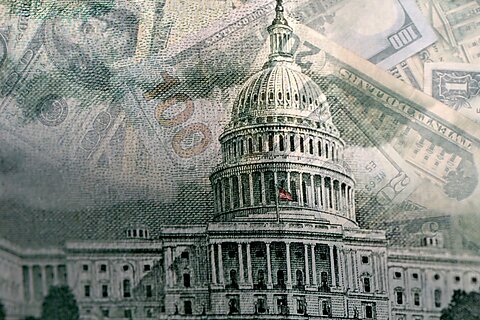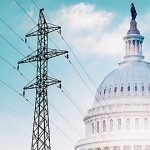
Nicholas Anthony
On November 28, Cecilia Skingsley, head of the Bank for International Settlements’ Innovation Hub, delivered a speech about central bank digital currencies, or CBDCs, that covered technological change, the use of cash, and the future of CBDCs.
Yet what really caught my attention was some of the more fundamental statements in the speech regarding the nature of money and the role of government. Namely, Skingsley argued that money is a public good and governments are innovators just like private sector companies. And thus, governments should charge ahead with CBDCs. Yet neither premise is correct.
Is Money a Public Good?
To set the foundation, Skingsley’s speech began by asserting that, “Money is a public good, and a very fundamental one.” She added:
[Money] should be neutral, and it should be easy to use, safe, and accessible for everyone. It is a clever solution to our need to make economic value portable. And who should be responsible for it? I would say central banks. Central banks are by legislation entrusted with offering money that meets criteria such as being a stable store of value and an efficient medium of exchange. They also provide a critical role as lenders of last resort in times of stress.
Central banks are monopolists in the provision of money as a public good. I strongly believe it should be so.
But money is not a public good. That term has a very specific meaning in economics. As explained by economists Paul Samuelson, Jeffrey Perloff, Stanley Fischer, Lawrence White, and many others, a “public good” is defined as a good that is both non‐excludable and non‐rival. Money has neither characteristic.
Let’s break down what these characteristics mean.
“Non‐excludable” means that once one person has access to a good, others can’t be excluded (or, at least not profitably) from enjoying it as well. A classic example is the ocean. There’s no way to (efficiently) prevent others from catching every fish. “Non‐rival” means that one person using a good does not subtract from the ability of others to use that good. In other words, the people using the good are not competing, or rivals, with one another. Here, a classic example is that of ideas. Anyone can think about economic theory without having to wait on others to stop.
So a public good is not simply a good provided by the public sector, or government. Rather, a public good is a good that can be consumed by someone and yet still be available for others to enjoy. At the same time, there is not an efficient way to prevent others from using that good. To have only one of these characteristics means a good is either a club good or common pool resource (Table 1). To have neither of these characteristics means a good is a private good.
Returning to Skingsley’s speech, money is not a public good. In fact, Lawrence White addressed this issue specifically in 1999. As White explained, people regularly and routinely compete as rivals when it comes to acquiring money. And in doing so, it is both cheap and effective to exclude others from using money once it is acquired.
Going beyond theory, it is also easy to see that the private sector has had a long and successful history of providing money. One need only look at the historical research conducted by George Selgin, Lawrence White, and Kevin Dowd. Again, as White has explained, these experiences largely only ended when “Central banks primarily arose, directly or indirectly, from legislation that created privileges to promote the fiscal interests of the state or the rent‐seeking interests of privileged bankers, not from market forces.” In other words, the government took over the production of money from private markets.
At a time when CBDCs have primarily risen in response to cryptocurrencies, it’s difficult to not see the parallels. It’s not the so‐called public good status of money that makes policymakers want a CBDC, but rather the ability to solidify control over money and payments.
What Is the Role of Government?
Turning to another argument in the speech, Skingsley sought to dismiss the idea that CBDCs are a solution in search of a problem. In short, the argument was that telling governments not to develop CBDCs is just like telling pharmaceutical companies to stop developing new drugs:
One thing we hear a lot is that “retail CBDC is a solution looking for a problem.” Why bother in the first place? Things are just fine. I hear that some in the financial industry are making just that argument.
Imagine for a second if a pharmaceutical company were to say, “That’s it, no more research. We don’t need new drugs, the ones we have are enough. And if we haven’t found the cure to certain diseases yet, we’ll probably have to live with that.” Or imagine car manufacturers saying, “That’s it, no more safety improvements!”
…
Let me again resort to history and provide an example. In 1989, engineers at Swedish phone company Ericsson were trying to develop wireless headsets. They invented Bluetooth.
They were not trying to stream wirelessly from a tablet to a TV and have fancy wireless speakers around the house; they were not thinking about wearables, power meters for bikes or the internet of things. All these things became possible after the basic technology was developed. Someone at the time might have thought, “What’s the problem with wires?”, and Bluetooth would never have been invented.
There is much to unpack here. First, to recognize that CBDCs do not offer any unique solutions is not to say there should not be research. In fact, it’s primarily because of research that CBDCs have been found to be a net negative for society. Therefore, to recognize that CBDCs do not offer any unique benefits for citizens, while presenting major risks, is to recognize that governments should not be launching them.
Second, there seems to be a blurring of the lines in this argument between the role of the government versus the role of the private sector. Perhaps coincidentally, International Monetary Fund managing director Kristalina Georgieva said earlier in November that, “Country authorities wishing to introduce CBDCs may need to think a little more like entrepreneurs.”
As I warned in response to that speech, government officials should not be trying to invent products and steer innovation to see what sticks like their entrepreneurial counterparts. Such interventions distort the market and restrict choices in the end.
To suggest that governments should operate like private companies is to fundamentally misunderstand the role of government. To the extent governments intervene, it should be because there is a clear and substantial market failure that only the government is able to address.
Reminiscing on the successes of Bluetooth, car companies, and modern medicine is indeed inspiring. But we should not forget the countless companies that failed along the way. Where entrepreneurs are many, countries usually only have one government. If a company fails to deliver a useful product, that company fails and another comes up with a better product. If a government fails to deliver a useful product, people are often stuck with it. Or worse yet, that product is forced upon people.
Conclusion
Skingsley’s speech was titled, “Shaping the Future Financial System in the Public Interest.” Yet, research appears to have already shown that CBDCs are not in the interest of the public. When surveyed in 2023, 34 percent of Americans opposed the idea of a CBDC. When those Americans learned of the costs and benefits, opposition rose to 74 percent. Later in 2023, 85 percent of Canadians surveyed said they would not use a CBDC.
In contrast, given other recent speeches and the spread of CBDCs across the world, it seems central bankers are extremely interested in CBDCs. Yet, whether this interest is due to the rise of cryptocurrency or a mistaken idea of public goods, the fact remains the same: governments should not needlessly intervene in the market.






